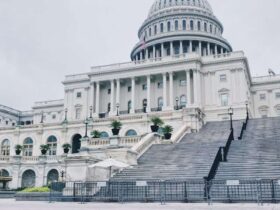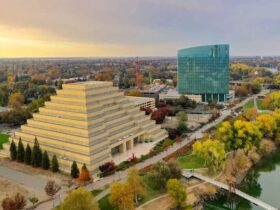Latin America, a region rich in history and culture, embarked on a transformative journey towards independence from European colonial powers in the late 18th and early 19th centuries. This period marked the emergence of a series of independence movements across the continent, driven by internal dissatisfaction and external influences, including Enlightenment ideas and the successful revolutions in America and France. As these diverse territories—ruled predominantly by the Spanish and Portuguese empires—struggled for sovereignty, they laid the foundation for new nations, reshaping their political, social, and economic landscapes. This article explores the multifaceted process of Latin American independence, highlighting the historical background, key figures, significant events, and the enduring impact of these movements on the region and its people.
When did Latin America gain independence?
Latin America’s journey to independence unfolded over the early 19th century, starting with the first successful revolt in Haiti in 1804. The Spanish colonies began their fight for independence around 1810, with Mexico and Argentina declaring independence in 1810 and 1816, respectively. These movements spread across the continent, with countries like Venezuela, Colombia, and Chile gaining independence in the 1810s and 1820s, largely due to the efforts of revolutionary leaders like Simón Bolívar and José de San Martín. Brazil declared independence from Portugal in 1822. By the 1830s, most Latin American countries had achieved sovereignty, marking the end of colonial rule and the beginning of a new era of national development and identity formation across the region.
Historical Background
The historical background of Latin America’s journey to independence is deeply rooted in centuries of colonization by European powers, primarily Spain and Portugal. This period began in the late 15th century when Christopher Columbus’s arrival opened the floodgates for European exploration and conquest. The Spanish and Portuguese empires established vast colonial territories across the continent, exploiting the rich natural resources and imposing their culture, language, and religion on the indigenous populations.
Before European colonization, Latin America was home to several advanced and diverse civilizations, including the Aztecs in present-day Mexico, the Mayans in Central America, and the Incas in the Andean region. These societies were characterized by their sophisticated agricultural practices, architectural achievements, and complex social and political structures.
The arrival of Europeans led to significant changes in the continent’s demographic, cultural, and economic landscapes. The Spanish and Portuguese conquerors implemented encomienda and hacienda systems, which allocated land and indigenous labor to European settlers. This period was marked by the exploitation of natural resources, forced labor, and the introduction of African slaves to replace the indigenous populations decimated by disease and violence.
Colonial society was stratified, with a social hierarchy that placed peninsulares (Spaniards born in Spain) at the top, followed by criollos (Spaniards born in the Americas), mestizos (mixed European and indigenous ancestry), mulattoes (mixed European and African ancestry), and at the bottom, the indigenous and African slave populations. The economy was heavily based on agriculture, mining, and export-oriented trade, controlled by the colonial powers to benefit the European markets.
The indigenous populations faced significant hardships under colonial rule, including displacement, forced conversion to Christianity, and exploitation. Introducing European diseases to which the native populations had no immunity led to catastrophic population declines. Despite these challenges, indigenous cultures and traditions persisted, influencing the syncretic cultures that characterize much of Latin America today.
Causes Of Independence Movements
Local and international factors influenced the independence movements across Latin America in the late 18th and early 19th centuries. These causes can be broadly categorized into enlightenment ideas, the impact of external revolutions, economic grievances, and the discontent among the Creole (criollo) population.
Enlightenment Ideas: The Enlightenment was a pivotal intellectual movement in Europe that emphasized reason, individualism, and questioning traditional authorities, including monarchies and the Church. Enlightenment thinkers such as John Locke, Jean-Jacques Rousseau, and Voltaire promoted ideas of liberty, democracy, and equality. These ideas found fertile ground among the educated classes in Latin America, who began questioning the legitimacy of Spanish and Portuguese rule and envisioning a society based on Enlightenment principles.
Impact of External Revolutions: The American Revolution (1776–1783) and the French Revolution (1789–1799) profoundly impacted the Latin American colonies. These revolutions demonstrated that it was possible to challenge and overthrow colonial rule. The success of the United States in gaining independence from Britain inspired many Latin American leaders. Similarly, the French Revolution’s ideals of “liberty, equality, fraternity” resonated with many who sought to break free from the hierarchical and oppressive colonial system.
Economic Grievances: Colonial economies in Latin America were heavily controlled by the European powers, which imposed restrictive trade policies that favored the metropole’s interests. This resulted in economic frustrations among local landowners, merchants, and other members of the colonial society who were hindered by limitations on trade with other nations. The monopolization of commerce by the Spanish and Portuguese, coupled with high taxes and tariffs, stifled economic development and provoked widespread dissatisfaction.
Creole Discontent: The Creoles, or criollos, were people of Spanish descent born in the Americas. Despite their European ancestry, they were ranked below the peninsular (Spaniards born in Spain) in the colonial hierarchy. This social stratification led to resentment among the Creoles, who were often excluded from high-ranking administrative and clerical positions. Their growing discontent with the lack of political and economic opportunities under colonial rule became a crucial driving force behind the independence movements.
Major Independence Movements And Wars
Latin America’s path to independence was marked by a series of significant movements and wars that varied across the region, reflecting the unique circumstances and challenges faced by each colony. These movements were characterized by the leadership of key figures, strategic military campaigns, and the eventual establishment of sovereign nations.
Northern South America: The Campaigns of Simón Bolívar
Simón Bolívar, known as “The Liberator,” played a pivotal role in the independence of present-day Venezuela, Colombia, Ecuador, Peru, and Bolivia. Bolívar’s military campaigns began with the Admirable Campaign in 1813, leading to the declaration of independence of the Third Republic of Venezuela. Following a series of battles, including the pivotal Battle of Boyacá in 1819, Bolívar helped establish Gran Colombia, encompassing modern Colombia, Venezuela, Ecuador, and Panama. His campaigns continued south, culminating in the Battle of Ayacucho in 1824, which secured the independence of Peru and later Bolivia.
Southern Cone: José de San Martín and the Liberation of Argentina, Chile, and Peru
José de San Martín is another central figure in Latin American independence, instrumental in liberating Argentina, Chile, and Peru. San Martín’s strategy involved creating an army in Argentina (the Army of the Andes) and crossing the Andes Mountains to attack the Spanish in Chile, leading to Chile’s liberation with the victory at the Battle of Chacabuco in 1817. Following this success, San Martín focused on Peru, where he declared its independence in 1821. San Martín’s vision and military acumen were crucial in the Southern liberation campaigns.
Mexico: The War of Independence
Mexico’s struggle for independence began with the Grito de Dolores in 1810, led by Miguel Hidalgo y Costilla, a criollo priest. Despite Hidalgo’s capture and execution, the movement continued under leaders like José María Morelos and Vicente Guerrero. It culminated with the Plan of Iguala and the Treaty of Córdoba in 1821, which resulted in independence from Spain, led by Agustín de Iturbide, who briefly became emperor before Mexico became a republic.
Brazil: Independence without War
Brazil’s path to independence was unique, as it involved minimal violence compared to its Spanish-speaking neighbors. The process began when the Portuguese royal family, fleeing Napoleonic forces, relocated to Brazil in 1808, elevating Brazil’s status. The call for independence gained momentum when King John VI returned to Portugal, leaving his son Pedro as regent in Brazil. Pedro declared Brazil’s independence on September 7, 1822, becoming its first emperor. The transition was relatively peaceful, with minor conflicts, and marked by a signed treaty with Portugal in 1825.
Central America: From Spanish Rule to the Federal Republic
The independence of Central American provinces (modern-day Guatemala, El Salvador, Honduras, Nicaragua, and Costa Rica) was declared on September 15, 1821, following a relatively peaceful process influenced by the Mexican War of Independence. After its dissolution, these provinces initially joined the Mexican Empire and formed the Federal Republic of Central America in 1823, which eventually fragmented into individual sovereign states by the late 1830s.
Conclusion
The struggle for independence across Latin America during the late 18th and early 19th centuries marked a profound transformation in the region, reshaping its political, social, and economic landscapes. From the northern campaigns led by Simón Bolívar to the southern conquests of José de San Martín and from Mexico’s prolonged war to Brazil’s relatively peaceful transition, the path to sovereignty was as diverse as the continent itself. Enlightenment ideals, dissatisfaction with colonial rule, economic grievances, and a desire for self-determination among the Creole elites fueled these independence movements. The legacy of these tumultuous times is complex. While independence freed Latin American countries from European colonial rule, it also ushered in a period of political instability, economic challenges, and social upheaval. The newly established nations grappled with defining their identities, managing internal conflicts, and navigating the difficult path of nation-building. Despite these challenges, the independence movements provided a foundation for developing national identities and pursuing sovereign futures.
FAQ’s
Who were some key figures in the Latin American independence movements?
Key figures include Simón Bolívar (Venezuela, Colombia, Ecuador, Peru, Bolivia), José de San Martín (Argentina, Chile, Peru), Miguel Hidalgo y Costilla (Mexico), and Pedro I (Brazil), among others. These leaders played pivotal roles in their respective regions’ struggles for independence.
Q How did the independence movements vary across Latin America?
The movements varied greatly, from the violent and prolonged wars of independence in the Spanish colonies, such as Venezuela and Mexico, to the relatively peaceful transition in Brazil. Local conditions, leadership, and the colonial powers’ responses shaped each region’s path to independence.
What were the primary outcomes of the independence movements?
The primary outcomes were the end of Spanish and Portuguese colonial rule in Latin America, establishment of independent nations, and the reshaping of political, social, and economic structures. However, these outcomes also included significant challenges, such as political instability and struggles to establish effective governance.











Leave a Reply